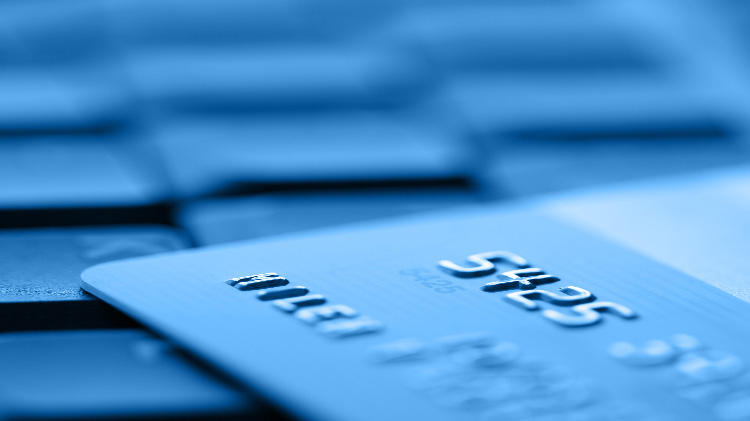How to get out of debt
Learn about debt management from reduction strategies to credit card debt consolidation programs to help find the right option for you.
If you have debt, you're not alone. With rising health insurance expenses and education costs, this has resulted in more households relying on credit cards and other means to cover daily and emergency expenses. Here are a few tips that may help manage credit cards and debt in your household.
Assess and create your budget
Creating a budget and documenting your take-home pay versus what you spend can be a good first step toward financial freedom. Generally, it's easier to see what kind of debt you have and what you’re paying when you list out your debt — a credit card payoff calculator might help. A list can help you understand what disposable income you have left at the end of each month and how much can be allocated to debt repayment. Go over the list carefully and include a line item for every single debt and payment you have to get an accurate picture of your debt situation.
Even if you don't have much leeway in your budget, try to include a separate line item dedicated to reducing your debt. Knowing this can help you with your debt repayment plan. Here are a few tips to help you prepare:
- Gather your bills. Look for reoccurring bills such as utilities, insurance, etc.
- Collect all receipts. Keep your receipts to see what you typically spend on things like groceries, entertainment, transportation, clothing and everyday expenses.
- Examine your income and paychecks. Add up all your paychecks and other income.
Once you establish your income, you can subtract your expenses to help set your budget.
Debt repayment strategies
Once you’ve set your budget, combining it with a debt repayment strategy can help give you even more bang for your buck.
The debt snowball method
The “snowball” method of debt repayment involves prioritizing paying off your smallest debt first. This can help you build momentum by eliminating individual sources of debt quickly. As soon as the smallest debt is fully paid off, you can allocate the money from that payment to the next smallest debt. For example, if you have a $5,000 business loan and a $1,000 personal loan, after making the minimum payments to both, you can dedicate all your remaining debt repayment funding toward paying off the $1,000 personal loan first. Once it’s paid off, you can apply that amount to the next debt in line.
The debt snowball method can be motivating as it allows you to set milestones with each debt paid off, gradually eliminating all of them!
The debt avalanche method
While the debt snowball method targets the smallest debts first, the debt avalanche prioritizes paying off debts with the highest interest rates. This method aims to increase long-term savings by quickly reducing high-interest payments. Consider creating a list of your debts from highest interest rate to lowest to help get a clear picture of your debt priorities. After making the minimum payments on your other debts, try to concentrate your debt repayment budget on paying down the debt with the highest interest rate.
Once the highest-interest debt is paid off, move to the next debt with the highest interest rate, and so on until all debts are cleared. In this approach, the debts gathering the most interest are eliminated the fastest.
Debt management plans
A debt management plan can help you secure a preferable interest rate and get your debts repaid faster than you’d otherwise be able to with only minimum payments. Typically, when you enroll in a debt management plan, a credit advisor will be assigned to you. This advisor can help you work on getting a reduced interest rate on your credit cards. From there, you can implement a payment plan that helps put you on track to pay your debt off on a fixed schedule.
With a plan in place, you can make regular payments to the agency handling your debt management plan. They then distribute that money to your creditor until the debt is fully repaid. Debt management plans can be an ideal fit for those seeking a structured plan and an agent who can help tailor that plan to the needs and lifestyle of the borrower.
Lowering the cost of debt
You may be able to help reduce the cost of your existing debt through methods like:
- Refinancing your loan. This is a strategy sometimes available for high-cost loans, such as mortgage, auto, personal and student loans. It replaces an existing loan with a new one that offers better terms, like a lower interest rate. Refinancing a loan can help save you money on monthly payments and allow you to potentially pay off your principal more quickly.
- Consolidating your debt. Consolidation involves combining debt from multiple sources into a single source. For example, if you owe $750 to Credit Card A with a 10% interest rate and $750 to Credit Card B with a 5% interest rate, consolidating these debts means paying off Credit Card A with Credit Card B. While you still owe a total of $1,500, it’s now only subject to the lower overall interest rate. Many debt consolidation programs also offer free advice on debt consolidation through non-profit organizations.
General tips for reducing debt
In addition to your overall strategy, here are some ideas to consider for reducing your debt:
- Avoid adding new debt. It may seem like a no-brainer, but debt can sometimes lead people to take on even more debt with new loans. When possible, resist using your credit cards or taking on additional loans as this ultimately means more debt to pay off.
- Consider a financial advisor. Some people choose to have a financial professional help them. You may want to consider if this would be beneficial for effectively managing your situation. While a financial advisor typically requires a fee, you might also consider consulting with a non-profit credit counselor.
- Use balance transfers. Balance transfers can be a good consolidation method to help reduce your interest rates and streamline your payment strategies. Check for a zero- or low-percent balance transfer if you have a good credit score. To get the most out of a balance transfer, consider interest rates, costs and fees. Using a consolidation loan calculator can be helpful as well.
- Pay a set amount or more than the minimum amount due. Consider paying more than the minimum due each month to help pay down the balances and principal faster.
- Automate your payments. Set up automatic payments from your checking or savings account for more consistent payments.
- Negotiate with creditors. Consider attempting to negotiate a debt settlement with the creditor, either individually or with the help of a credit counseling service. It's not uncommon to negotiate a reduced amount of overall debt or a longer window to repay the debt, allowing for smaller individual payments. Bear in mind though that successful debt negotiations can still have an impact on your credit score.
- Put extra income or resources to work. Apply bonuses, tax refunds and any additional earnings — including unexpected windfalls — toward paying off your credit cards and loans.
- Set up an emergency fund. Prioritize establishing a financial emergency plan and fund it before executing your debt repayment plan. Calculate and build your emergency fund to help prepare for unexpected expenses.
- Take small steps. It can be easy to become overwhelmed when you have debt. Tackle it gradually and know that every little contribution matters. Progress, no matter how small, adds up over time.
- Watch your statements and monitor your credit report. Keeping a watchful eye on your bank statements, credit card statements and credit report can help you keep track of your payments. Credit monitoring allows you to monitor your account activity and detect fraudulent activity.
Now that you've learned about some tips on managing debt and potential debt relief programs, check out "Four Kinds of Savings" for simple tips on getting some cash in the bank for the stuff that always seems to pop up.
Calculators and worksheets
Give these tools a try to help reduce your debt.




